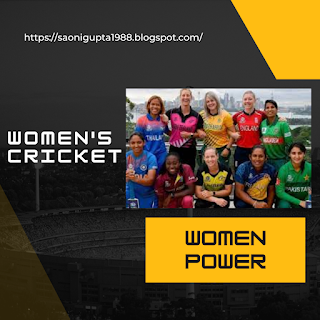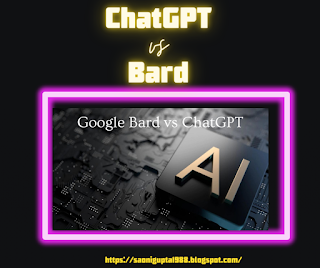Women's Cricket: Queens of the Pitch
Cricket, like many other sports, has traditionally been male-dominated. However, in recent years, women's cricket has gained more attention and support, and women's teams and players are making significant strides in breaking down barriers and promoting gender equality in the sport as more and more young girls are taking up this sport . In this blog, I will explore the history of women's cricket, the current state of the game, and the challenges and opportunities facing women in cricket.
Historical Context
The history of women's cricket dates back to the late 18th century, when the first recorded women's cricket match was played in Surrey, England. Women's cricket continued to develop throughout the 19th century, but it was not until the mid-20th century that it gained more widespread recognition. In 1958, the International Women's Cricket Council (IWCC) was formed, and the first Women's World Cup was held in 1973.
Current State
In recent years, there has been a significant increase in the number of women's cricket teams around the world. The International Cricket Council (ICC) has been instrumental in promoting women's cricket, and in 2005, it granted official One Day International (ODI) status to women's cricket teams. Since then, women's cricket has continued to grow, with more and more countries investing in the sport.
One of the major milestones for women's cricket was the introduction of the Women's World Cup in 1973. Since then, the tournament has been held every four years, and it has become one of the most prestigious events in women's cricket. In recent years, the ICC has also introduced other major women's cricket tournaments, including the Women's T20 World Cup, which is held every two years.
Women's cricket has also made significant progress in terms of equality and recognition. In 2017, the ICC awarded full international status to all women's T20 matches, which meant that all women's international matches were given the same status and recognition as men's international matches.
Recently, in India, a franchise league for women's Twenty20 cricket called the Women's Premier League (WPL) has been organized. The Board of Control for Cricket in India (BCCI) owns and manages it. The first season began in March 2023, and Mumbai Indians won the inaugural championship. This was a significant step towards promoting gender equality in the sport and providing more opportunities for female players.
Challenges
Despite the progress made, women in cricket still face several challenges and obstacles. One of the most significant challenges is the lack of resources and funding for women's cricket. Many countries do not have established women's cricket programs or teams, and even in countries where women's cricket is more developed, resources and funding are often inadequate compared to men's cricket. This can lead to a lack of opportunities for women to develop their skills and compete at higher levels.
Another challenge is the lack of media coverage and visibility for women's cricket. Women's cricket matches often receive less attention and airtime than men's matches, leading to a lack of exposure and opportunities for women players. This can also impact sponsorships and endorsements, which are critical for supporting players' careers and developing the sport.
Like many other sports, women's cricket has also been impacted by the COVID-19 pandemic. The cancellation or postponement of matches and tournaments has had significant financial and logistical impacts on women's cricket, particularly in countries with fewer resources and support for women's cricket. However, the pandemic has also provided opportunities for innovation and adaptation, with some women's cricket matches and tournaments being held in bio-secure bubbles with limited crowds.
Opportunities
However, there are also many opportunities for women in cricket. The growth of women's cricket in recent years has led to increased participation, interest, and investment in the sport. The ICC has launched several initiatives to support and promote women's cricket, including the Women's Cricket Strategy 2017-2022, which aims to increase the global competitiveness and profile of women's cricket.
Women's cricket has also become more inclusive and diverse, with efforts to promote diversity and representation in teams and leadership roles. For example, in 2020, Australia appointed Lisa Sthalekar, a former player and the first woman of South Asian descent to play for Australia, as a selector for their men's team.
Women are not just making strides on the field but also off the field. In recent years, there has been a significant increase in the number of women in leadership roles on cricket boards and associations around the world. For example, Clare Connor became the first female president of the Marylebone Cricket Club (MCC) in 2020, and in 2021, the Pakistan Cricket Board (PCB) appointed Urooj Mumtaz as chair of the national women's selection committee.
Women players in cricket have not only broken records and achieved great success but have also become inspiring role models for young girls around the world. For example, Ellyse Perry from Australia is considered one of the best all-rounders in the game and has been a vocal advocate for gender equality in sport. Mithali Raj, the former captain and player of the Indian women's cricket team, is the leading run-scorer in women's international cricket and has been a trailblazer for women's cricket.
Women's cricket is played in many countries around the world, with more and more countries investing in the sport. For example, in 2018, the ICC granted full member status to Ireland and Afghanistan, allowing their women's teams to compete at the highest level. This has led to more opportunities for female players and increased the global competitiveness of women's cricket.
In terms of players, women's cricket has seen a number of exceptional talents emerge in recent years. Players like Meg Lanning, Sophie Devine and Hayley Matthews have become household names in countries like Australia, New Zealand, and West Indies, and they have achieved great success both on and off the field. Other players like Jhulan Goswami, Harmanpreet Kaur and Smriti Mandhana have become trailblazers for women's cricket in India, and they have inspired countless young girls to take up the sport.
Conclusion
Women's cricket has come a long way since its inception, and female players and teams are making significant strides in promoting gender equality in the sport. While there are still challenges and obstacles to overcome, the growth and development of women's cricket provide many opportunities for women players to achieve their full potential and inspire future generations of women in cricket. By continuing to support and invest in women's cricket, we can create a more inclusive and equitable cricket world for all.







Women power 💪
ReplyDeleteIndeed💯
Delete